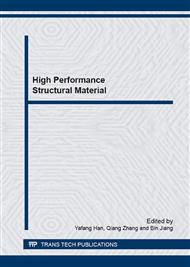p.319
p.324
p.333
p.337
p.343
p.349
p.356
p.362
p.370
The Effect of Casting Speed on Physical Fields of AZ80 Magnesium Alloy during DC Casting
Abstract:
A comprehensive two-dimensional (2D) mathematical model based on a combination of the commercial finite element package ANSYS and the commercial finite volume package FLUENT was developed to describe the interaction of the multiple physics fields during DC casting process. ANSYS was for calculation of the stress field and FLUENT was for calculation of the fluid flow, heat transfer of the solidification. The results show that: the model is reliable and accurate to simulate the multiple physics of DC casting. Consequently, the position, which was prone to hot tearing, was confirmed and the max velocity, at which the hot cracking might not occur, was determined. The numerical simulations will be very useful for preventing crack, optimizing casting parameters and obtaining high-quality ingots.
Info:
Periodical:
Pages:
343-348
Citation:
Online since:
April 2015
Authors:
Price:
Сopyright:
© 2015 Trans Tech Publications Ltd. All Rights Reserved
Share:
Citation:


